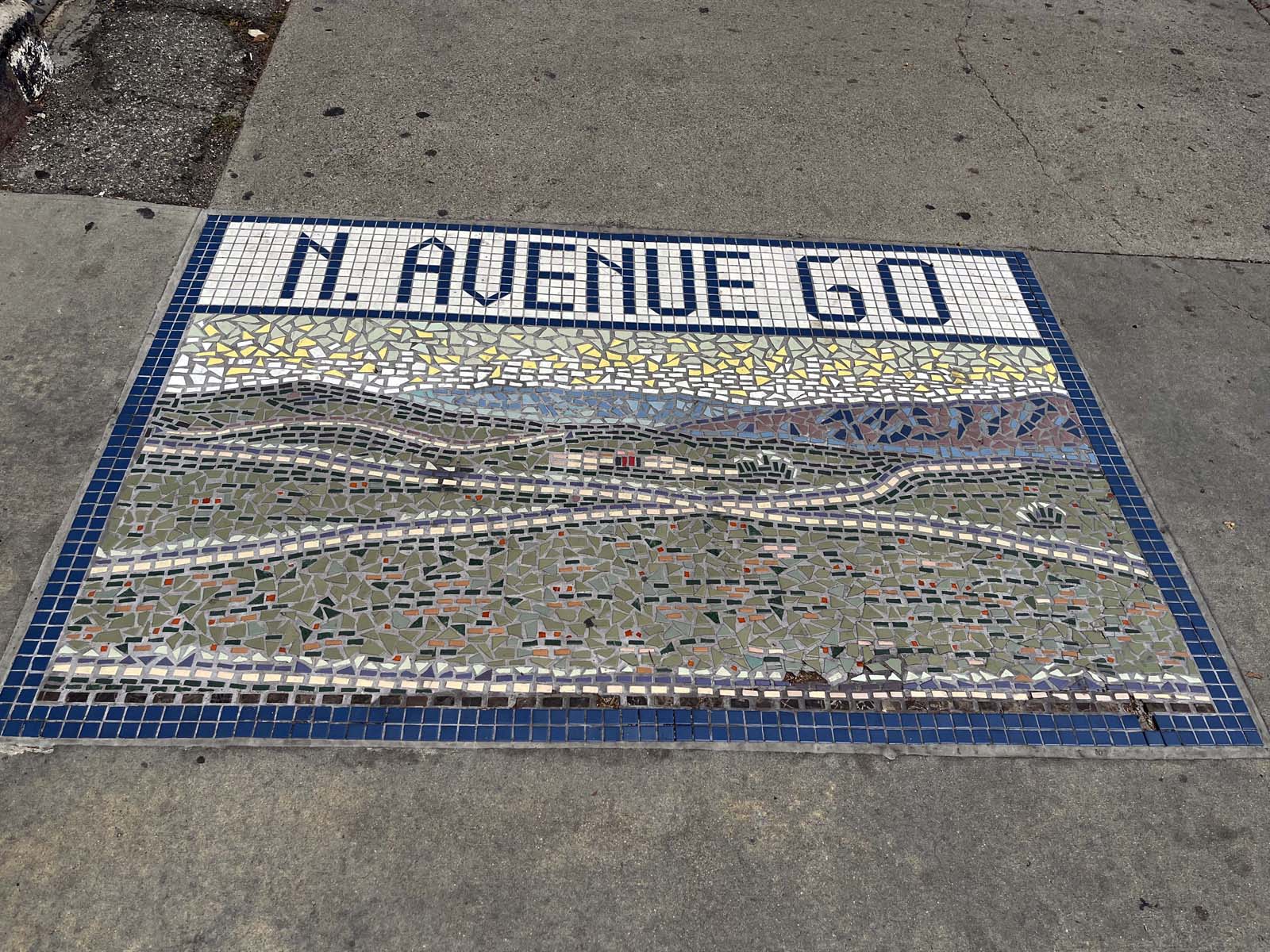Just a short walk, if you want to join, another one to bring home the immense variety of what L.A. has to offer, one neighborhood at a time. Highland Park has two dubious distinctions: for one it was the very first suburb of L.A. proper until 1895, when it was annexed after the community pleaded for incorporation, by all reports to assure increased police presence in a flourishing red light district. It took but two days after annexation, that the police chief and his posse came in and literally burned down all the brothels and gambling saloons. Maybe not a coincidence that L.A.’s Police Museum is located in this neighborhood. I did not inquire. Or set foot in it. Surprise.

Secondly, Highland Park has had the highest speed of gentrification of all small L.A. neighborhoods in recent years, which can be a good thing or a bad thing, depending on your perspective and the size of your wallet.

Lots of stuff that is too hard to move or had to be sold, ends up in second hand stores that line the streets.


As does the stuff itself.

The neighborhood is situated between central L.A. and Pasadena alongside the Arroyo Secco. Much of its history is commemorated with sidewalk mosaics and information columns that display archival photographs and explanatory texts, quite informative.




Highland Park started to flourish with the arrival of the San Gabriel Valley Railroad which opened a station in 1885, followed by the Los Angeles and Pasadena Electric Railway that laid down the first interurban electric railway in Southern California in 1895, helping people to commute. Today you find suicide prevention signs at every crossing.

Image courtesy of the Los Angeles Public Library

Occidental College, established by the Presbyterian Church, opened its campus in the early 1900s and has been serving generations ever since.

Image courtesy of the USC Digital Library
Many of the public buildings from the time have been preserved, but are no less exposed to change. A historic landmark, the nearly century-old Highland Theatre building on Figueroa Street, one of the two main drags through the area, was up for sale as of last August, since its 99 year lease, signed in 1924, will expire. It was the last of 4 theaters along this street to survive, including the historic Sunbeam Theatre. The facade will have to be preserved, but the function and lay-out inside is the new investors’ domain.






Some public buildings are well maintained, other establishments show the ravages of the economy. Here is the public library


and the municipal water building.





The minute you venture off the main thoroughfares you find small, well maintained bungalows and funky gardens or wall paintings. But also signs of distress.






Lots of color to be found on the major streets as well, tempered by the presence of police in front of swank new shops and restaurants, though absent at the traditional stores.







Someone chose aphorisms for public utility meters,





And murals commemorate the history of the place.










And sometimes color just pops up unintentionally….

Lots of eateries behind screens on the sidewalk, filled with young people enjoying lunch – the place is clearly vibrant, with traditional mini-malls sharing space with new upscale boutiques.



I must say, I will miss the diversity of it all when returning to PDX. Then again, it will be good to be home after such a long stretch. Just think of all the bird pictures you’ll be getting…..





